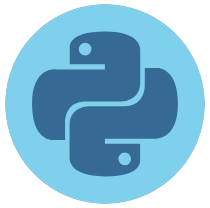Python Sets
Sets are an unordered list of data elements. They contain more than one item in a single variable. Set items are comma-separated and contained within curly braces {}.
Example:
set1 =
{2, 6, 14}
print(set1)
Output
{2, 6, 14}
Add set Items
To insert a single item into a set, employ the add() method.
Example:
fruits =
{"Apple",
"Orange",
"Mango"}
fruits.add("Banana")
print(fruits)
Output
{'Banana', 'Orange', 'Mango', 'Apple'}
Update Set
To insert items from another set into the current set, employ the update() method.
Example:
fruits =
{"Apple",
"Orange",
"Mango"}
fruits2 =
{"Lemon",
"Grape",
"Litchi"}
fruits.update(fruits2)
print(fruits)
Output
{'Lemon', 'Orange', 'Grape', 'Mango', 'Apple', 'Litchi'}Remove items from set
To delete an item from a set, employ the remove() and discard() methods.
Example 1:
fruits =
{"Apple",
"Orange",
"Mango"}
fruits.remove("Mango")
print(fruits)
Output
{'Orange', 'Apple'}
Example 2:
fruits =
{"Apple",
"Orange",
"Mango"}
fruits.discard("Orange")
print(fruits)
Output
{'Mango', 'Apple'}
Set Methods
Python offers a number of in-built methods to handle sets.
isdisjoint()
The isdisjoint() method verifies whether elements of a specified set exist in another set.
Example:
fruits =
{"Apple",
"Orange",
"Mango"}
fruits2 =
{"Apple",
"Orange",
"Mango"}
print(fruits.isdisjoint(fruits2))
Output:
False
issuperset()
The issuperset() method verifies whether all the elements of the specified set exist in the
original set.
Example:
fruits =
{"Apple",
"Orange",
"Mango"}
fruits2 =
{"Apple",
"Mango"}
print(fruits.issuperset(fruits2))
Output:
True
issubset()
The issubset() method verifies whether all the elements of the original set exist in the specified
set.
Example:
fruits =
{"Apple",
"Orange",
"Mango"}
fruits2 =
{"Orange",
"Mango"}
print(fruits2.issubset(fruits))
Output:
True

